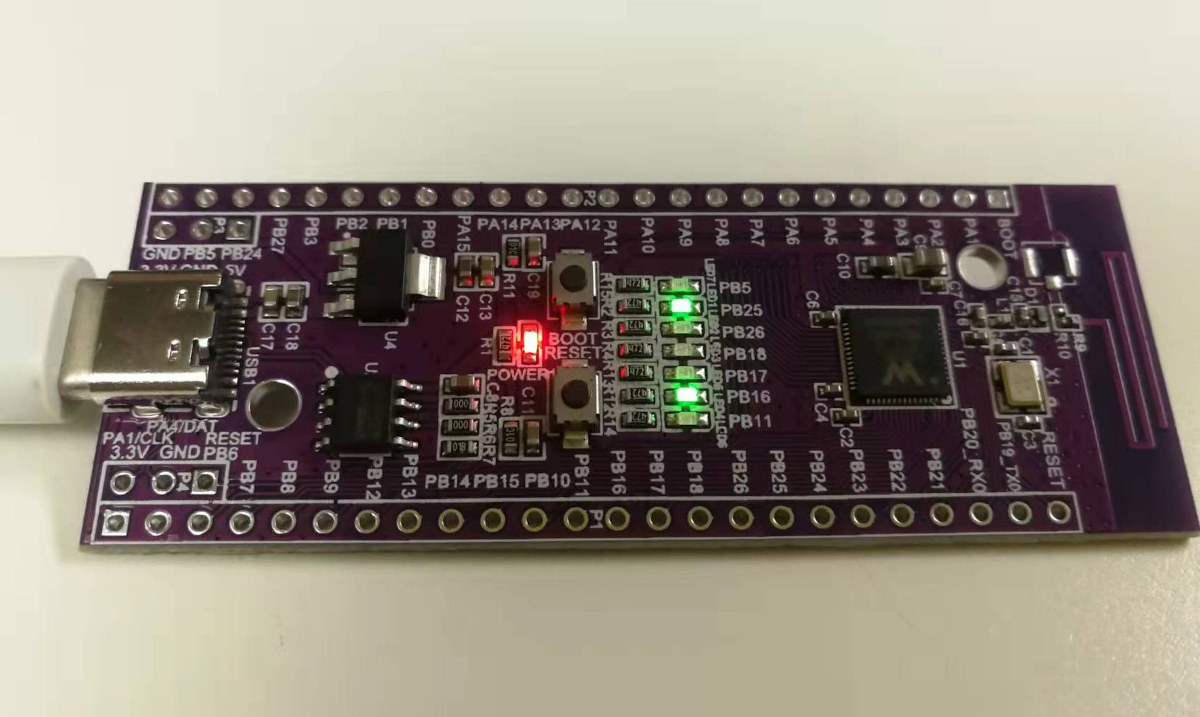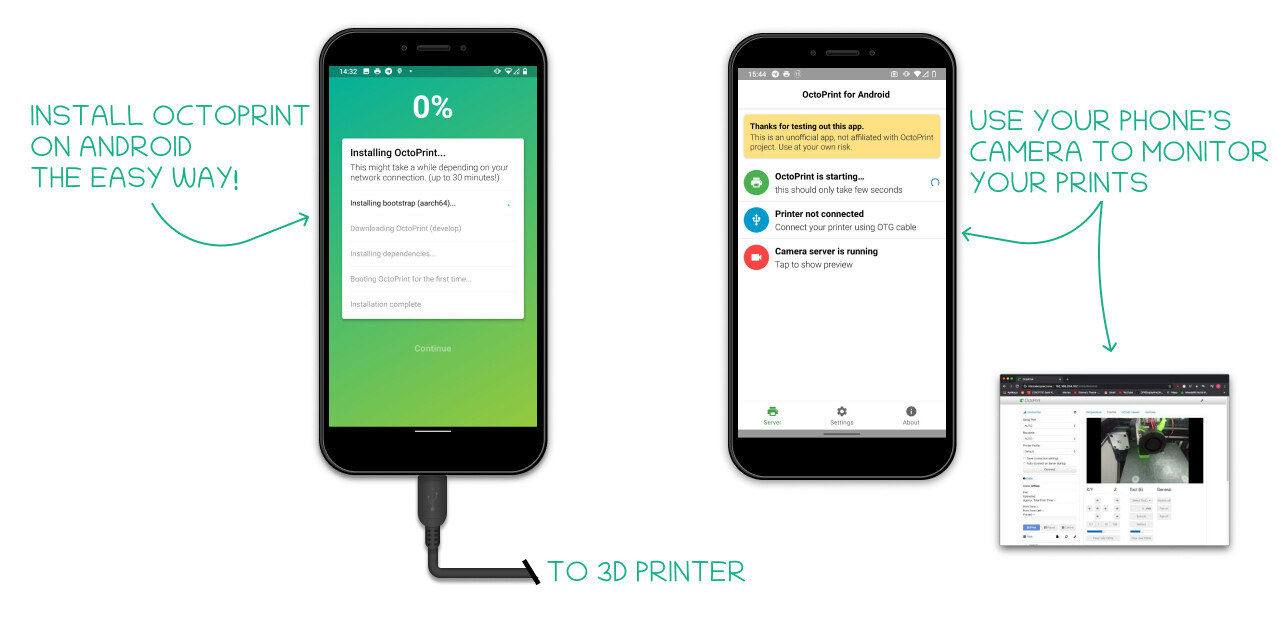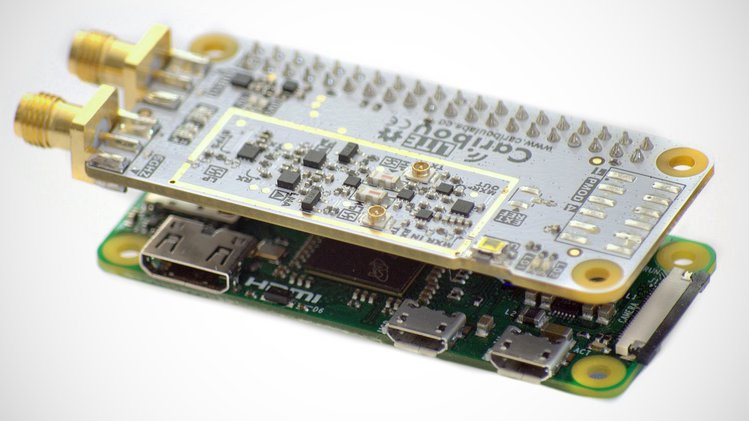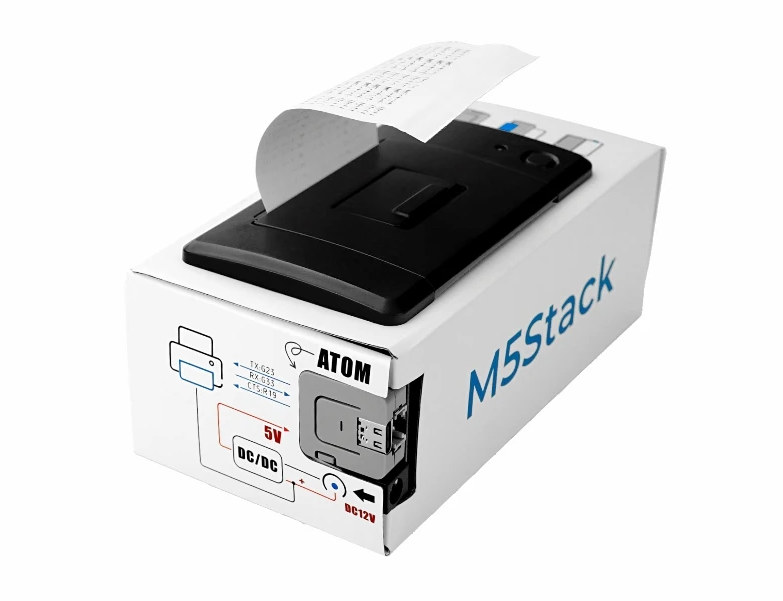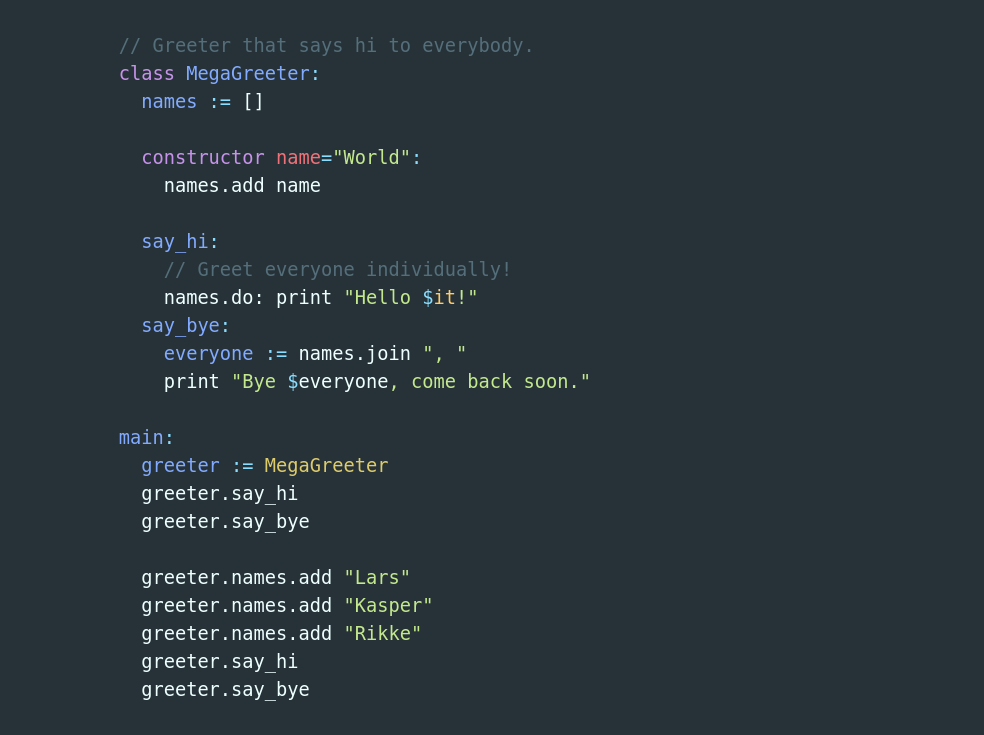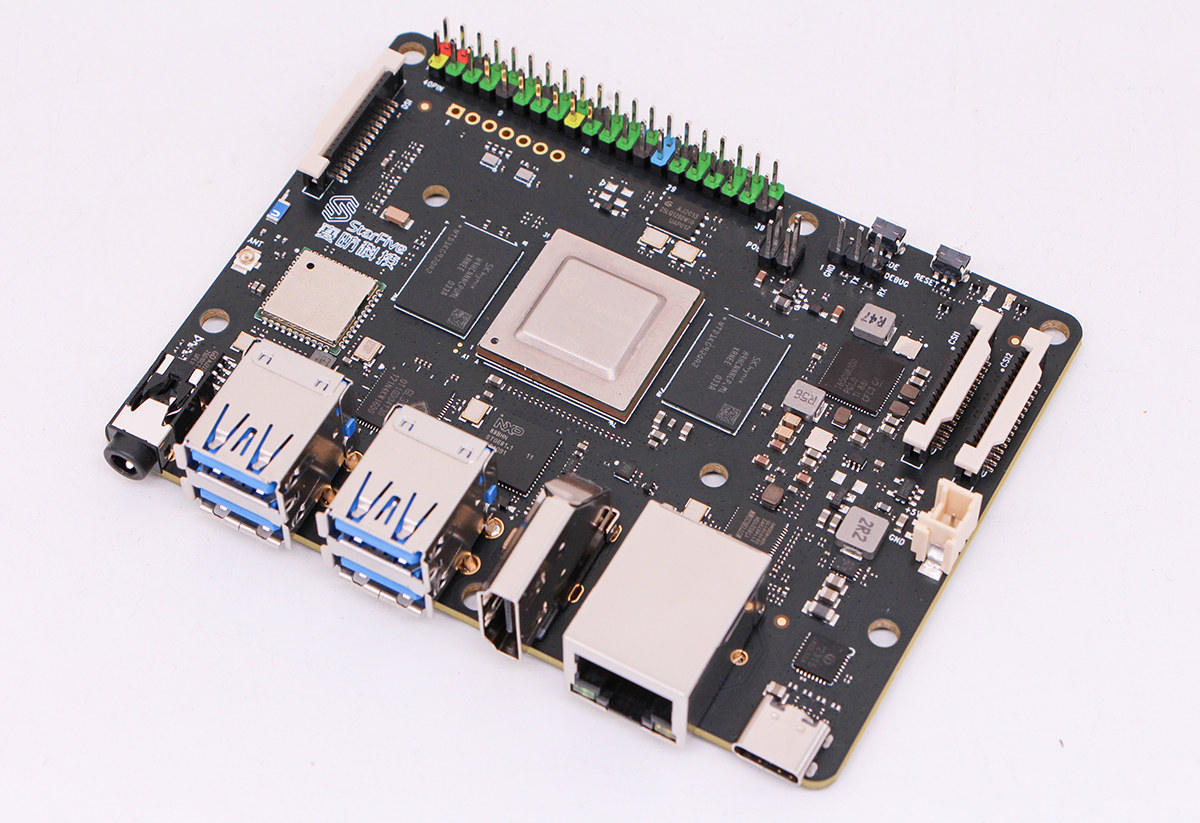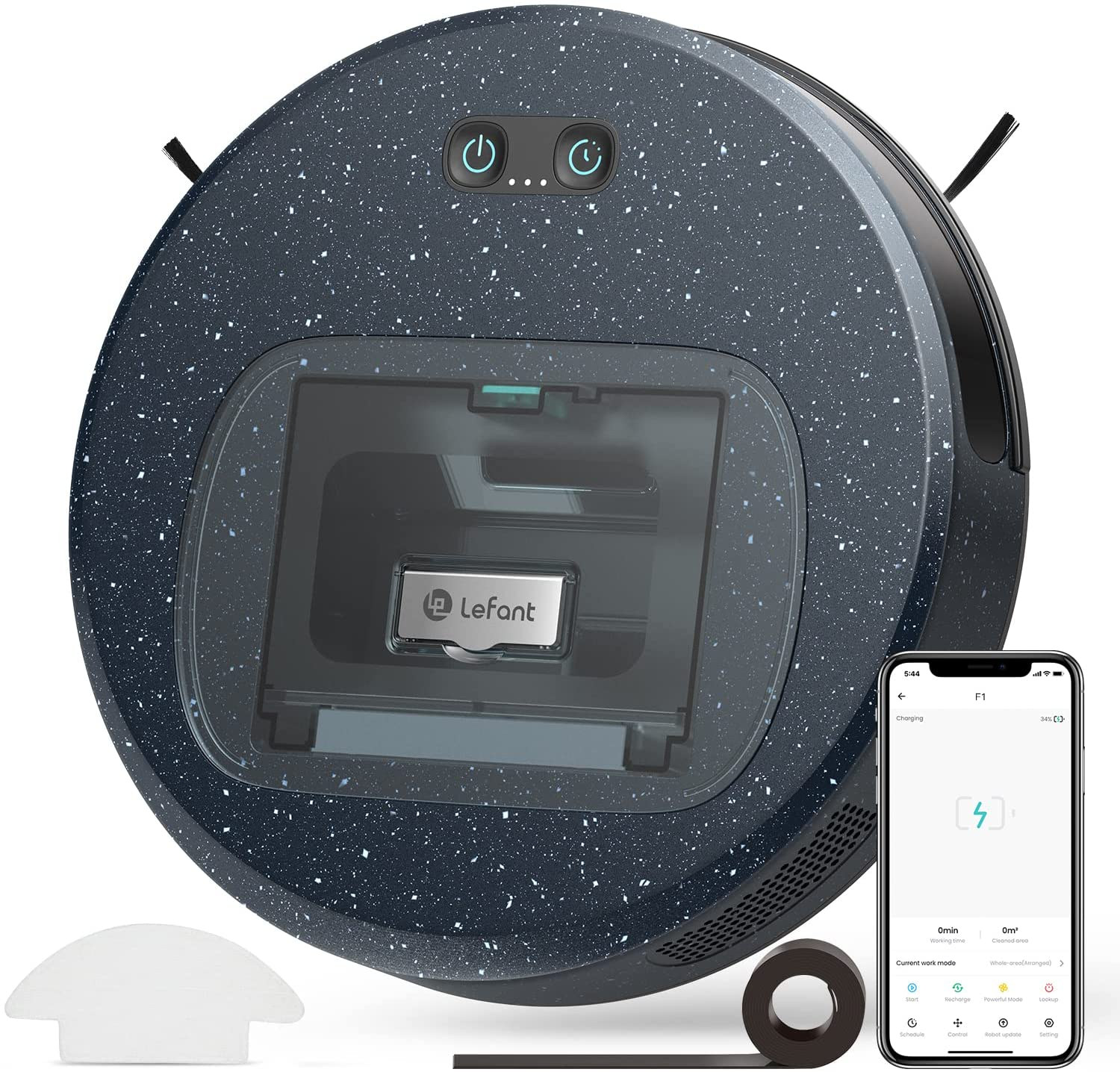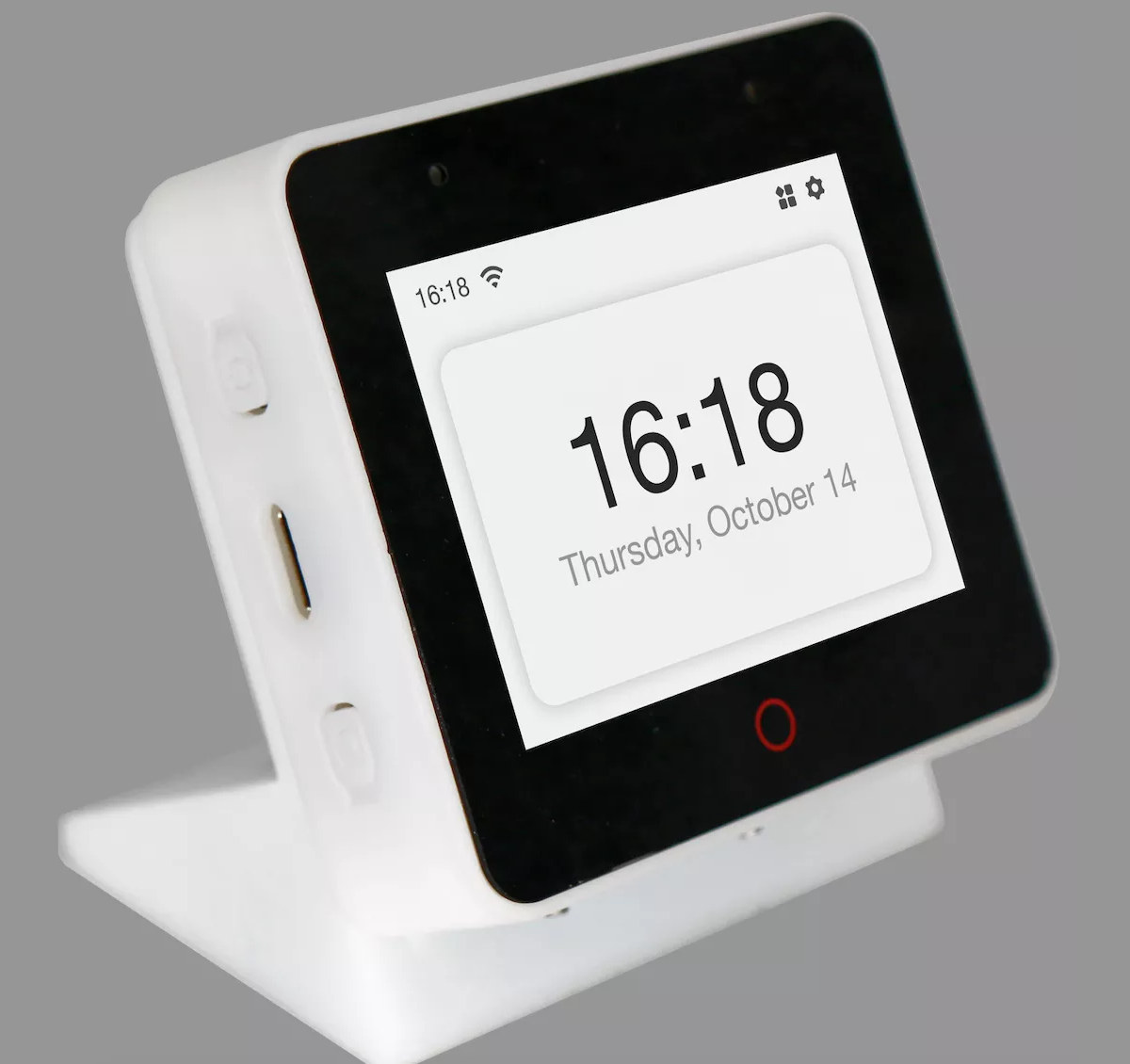Earlier this month, we wrote about the 240 MHz WinnerMicro W806 Alibaba Xuantie XT804 C-Sky microcontroller with 1MB flash, 288KB SRAM found in the $2 HLK-W806 development board. But the company has a nearly identical WinnerMicro W801 microcontroller that bumps the internal flash to 2MB, and more importantly adds a 2.4 GHz radio with WiFi 4 and Bluetooth LE 4.2 connectivity, and HiLink also released the HLK-W801 board that’s nearly identical to HLK-W806, except for some extra LEDs, a USB-C port instead of a Micro USB port, and a longer form factor to make space for the PCB antenna. HLK-W801 board specifications: MCU – WinnerMicro W801 32-bit Alibaba XT804 microcontroller @ 240 MHz with 2MB Flash, 288KB RAM, FPU, DSP, crypto engine, 2.4 GHz radio Connectivity 802.11b/g/n WiFi 4 up to 150 Mbps supporting station, soft AP and station+soft AP modes, WPA2 security Bluetooth 4.2 Expansion – 2x 24-pin headers […]
Octo4a app installs OctoPrint server on Android smartphones
Octoprint is a popular open-source 3D printer controller software that runs on Raspberry Pi boards, Orange Pi Lite SBC, Amlogic TV boxes, and other devices. But considering many people may already an older, perfectly working smartphones at home, FeelFree (Filip) decided to create the Octo4a project that install an Octoprint server on Android smartphones. It makes perfect sense since many smartphones come with a USB OTG interface that can connect to the 3D printer for control, while the touchscreen display is used for the user interface, and the camera to monitor your prints. SSH could be used to access the phone Octoprint server and change the settings manually. You can access the source code and APK files on Github. You’ll need to enable third-party apps in the settings before installing the app in order to install Octoprint on the phone. The only required permission is storage, except if you’d like […]
CaribouLite RPi HAT open-source SDR Raspberry Pi HAT tunes up to 6 GHz (Crowdfunding)
CaribouLite RPi HAT is an open-source dual-channel software-defined radio (SDR) Raspberry Pi HAT – or rather uHAT – that works in the sub-GHz ISM range and optionally the 30 MHz – 6 GHz range for the full version. Developed by Israel-based CaribouLabs, the micro HAT is equipped with a Lattice Semi ICE40LP1K FPGA, a Microchip AT86RF215 RF transceiver, two SMA antenna connectors, a Pmod expansion connector, and designed for any Raspberry Pi board with a 40-pin GPIO header. CaribouLite RPi HAT specifications: FPGA – Lattice Semi ICE40LP with 1.28 kLE RF Chipset – Microchip AT86RF215 Sub-GHz / 2.4GHz transceiver Qorvo’s RFFC5072 integrated Mixer IC (for full version only) Tuning Range CH1 Full version – 30 MHz – 6 GHz ISM version – 2.4 – 2.4835 GHz CH2 – Sub-1GHz Max Sampling Rate – 4 MSPS ADC/DAC Resolution – 13-bit Max RF Bandwidth – 2.5 MHz Transmit Power – up to […]
Wireless thermal printer kit features M5Stack ATOM Lite controller
The M5Stack ATOM thermal printer kit is a desktop DIY thermal printer comprised of the company’s ATOM Lite IoT controller equipped with ESP32-Pico-D4 system-in-package and a 58mm thermal printer housed in a cardboard package. The printer can print text, graphics, barcodes, or QR code printings, and the pre-installed firmware offers two modes of operation with “AP Connect Print” where the printer is seen as an access point and can be controlled with a smartphone or computer from a web browser, and the “MQTT Notifications” mode that prints the content of MQTT messages. Highlights of the ATOM thermal printer kit: M5Stack ATOM Lite IoT controller with ESP32-Pico-D4 WiFi and Bluetooth SiP fitted with 4MB Flash 58mm thermal printer connected over UART (9600 bps 8N1) Supports for text/graphics/BarCode/QRCode Speed – 60mm/s 203dpi 8 dots/mm up to 384 dots per line Connectivity over WiFi AP hotspot connection, web-controlled printing Printing content sent via […]
Toit open-source language claims to be 30x faster than MicroPython on ESP32
Developed by a team of former Google employees, Toit is a complete IoT platform with remote management, firmware updates for fleets of devices with features similar to the one offered by solutions such as balena, Microsoft Azure, or Particle edge-to-cloud platform. Toit currently works on ESP32 microcontrollers using lightweight containers, and after seeing existing high-level languages MicroPython and Javascript were not fast enough on low-end microcontrollers platforms, the team at Toit started to develop the Toit language in 2018, and has just made it open-source with the release of the compiler, virtual machine, and standard libraries on Github under an LGPL-2.1 license. One of the main reasons to switch from MicroPython to the Toit language is if your application is limited by performance or you operate ESP32 from a battery, as Toit claims up to 30x faster performance with Toit on ESP32: We went into crunch mode and some months […]
VisionFive V1 RISC-V Linux SBC resurrects BeagleV StarFive single board computer
Last summer we reported that BeagleV StarFive RISC-V SBC would not be manufactured, but all was not lost as StarFive would collaborate with Radxa to make a new single board computer based on their JH7100 dual-core 64-bit RISC-V processor. But thanks to a report on Heise and extra photos acquired by CNX Software, we now have more details about the board that mostly comes with the same features as the BeagleV StarFive, but a completely different layout that brings all the main ports to one side of the board. VisionFive V1 specifications: SoC – StarFive JH7100 Vision SoC with: Dual-core Sifive U74 RISC-V processor @ 1.5 GHz with 2MB L2 cache Vision DSP Tensilica-VP6 for computing vision NVDLA Engine 1 core (configuration 2048 MACs @ 800MHz – 3.5 TOPS) Neural Network Engine (1024MACs @ 500MHz – 1 TOPS) VPU – H.264/H.265 decoder up to 4Kp60, dual-stream decoding up to 4Kp30 […]
Lefant F1 – An ultra compact, yet powerful smart vacuum cleaner and mopping robot (Sponsored)
Established in 2011, Lefant Technology is a company specialized in intelligent robot technology and products, with a mission following the motto “Smart Technology, Better Family Life”, the company handles the full product lifecycle in-house from R&D to manufacturing and marketing and has launched several Lefant smart vacuum cleaners over the years including models such as Lefant U180, Lefant M201, Lefant M210, and Lefant T800. One of their latest products is the Lefant F1 robotic vacuum and mop combo that comes with a 600ml dust bin, 4000pa of suction power, and offers up to 200 minutes of runtime per charge. Some of the highlights of the Lefant F1 robotic vacuum cleaner include: A small body – The F1 robot vacuum cleaner comes in a compact size with an 11-inch diameter (about 28cm), and a 2.7-inch height (about 6.9cm) which allows it to reach locations that large robots cannot always go through. […]
Espressif introduces ESP32-S3-BOX AI development kit for online and offline voice applications
Espressif Systems has very recently introduced the ESP32-S3-BOX AI voice devkit designed for the development of applications with offline and online voice assistants, and whose design I find similar to the M5Stack Core2 devkit, but the applications will be different. The ESP32-S3-BOX features the latest ESP32-S3 processor with WiFi and BLE connectivity, AI capabilities, as well as a 2.4-inch capacitive touchscreen display, a 2-mic microphone array, a speaker, and I/O connectors with everything housed in a plastic enclosure with a stand. ESP32-S3-BOX specifications: WiSoC – ESP32-S3 dual-core Tensilica LX7 up to 240 MHz with Wi-Fi & Bluetooth 5, AI instructions, 512KB SRAM Memory and Storage – 8MB octal PSRAM and 16MB QSPI flash Display – 2.4-inch capacitive touchscreen display with 320×240 resolution Audio – Dual microphone, speaker USB – 1x USB Type-C port for power and debugging (JTAG/serial) Expansion – 2x Pmod-compatible headers for up to 16x GPIOs Misc Power […]


